A New Appreciation for 'A New Hope'
How 'Rogue One' Makes Us Look at Star Wars Differently

The Star Wars franchise is perhaps most responsible for the popularization of the term "prequel," so it's entirely fitting that the series should contain the prequeliest prequel ever. This year's addition to the ever-expanding Star Wars canon, Rogue One, is a direct baton-pass to the original 1977 film Star Wars: Episode IV A New Hope. If you cut out the end credits of the former, and the opening crawl of the latter, you would have a contiguous four-hour feature that tells a complete story: "The Death Star – From Discovery to Destruction."
So what happens when we do pair these films together? How do the events of Rogue One impact the events of A New Hope? After seeing the newest addition to the Star Wars series (the second time) I immediately went home and queued up the original adventure to find out. Being the Star Wars über-nerd that I am, I've watched the Classic Trilogy more times than I can count, and there are a few things that I appreciated differently after having watched Rogue One and and A New Hope back-to-back.
From this point onward: SPOILERS!
Obi-Wan Kenobi suddenly looks like a complete & total badass.
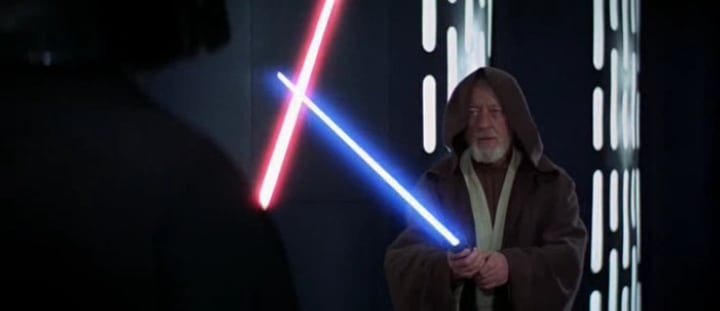
When I left you I was but the learner, now I am the master.
We are clearly meant to understand in the original Star Wars film that Darth Vader is not someone to be trifled with. The performances of David Prowse and James Earl Jones clearly convey the idea that very few people have ever engaged in single combat with the Dark Lord of the Sith and lived to tell the tale. He stalks down every hallway as a man on a mission in a galaxy that bends to his will.
When Obi-Wan and Vader meet on the Death Star, it is impossible not to remember the last time we saw that crimson energy blade spring to life. Only an hour and a half ago (in runtime) we bore witness to the right hand of the Emperor carving a bloody swath through the rebel soldiers aboard the Alliance flagship, Profundity.
This scene in Rogue One serves not only as an opportunity to see our favorite cinematic villain in action, but also as an opportunity for important character development. Among the group of rebels killed in this scene of destruction, are four men who have their blasters wrenched from their grasp and flung down the passageway and thus disarmed are still slaughtered. Plainly, Darth Vader isn't in the habit of accepting surrenders.
At 57 years of age, "Old Ben" isn't exactly as ancient as Yoda–but he's far from in his prime. Yet he holds his own against the Dark Lord. Facing an opponent who recently massacred a dozen trained soldiers without so much as raising his heart rate, the Jedi Master endures.
In fact, we have no reason to assume that Obi-Wan would not have prevailed in his duel against Vader, had he not chosen to sacrifice himself to allow Luke and the others to escape: he wasn't wounded, he wasn't out of breath, he wasn't holding on for dear life. Alec Guinness is clearly portraying the old master as being calm and at peace. Obi-Wan makes the choice to sacrifice his life so that the rebels will get on the Falcon and escape, knowing how important their mission is.
The ruthlessness displayed by Vader in Rogue One is powerful, so his inability to quickly dispatch his old master reveals that Obi-Wan Kenobi–despite his decades in exile in the desert–is still very strong with the Force.
Non-Jedi everywhere regard the Force as a religion.
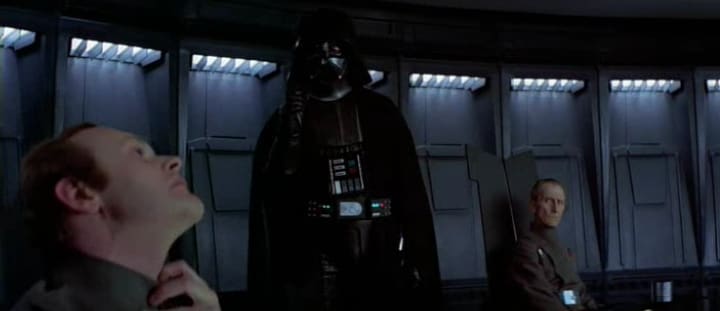
I find your lack of faith disturbing...
In A New Hope, Grand Moff Tarkin and Admiral Motti both explicitly refer to the Force in religious terms, rather than in the more vaguely pseudo-spiritual terms that the Jedi themselves use.
Towards the beginning of the film, Motti famously taunts Darth Vader, saying, "Don't try to frighten us with your sorcerer's ways, Lord Vader. Your sad devotion to that ancient religion has not helped you conjure up the stolen data tapes, or given you clairvoyance enough to find the rebels' hidden fortress." Tarkin reminds Vader that the Jedi are gone, that the Dark Lord is "all that's left of their religion."
Even one of our heroes, Han Solo, has a similar view of the Force. "Hokey religions and ancient weapons are no match for a good blaster at your side," he tells Luke and Obi-Wan, "...no mystical energy field controls my destiny."
In Rogue One, we have even more examples of non-Force-sensitive people referring to the Force and Jedi with religious terminology. The film introduces us to new Jedi-related ideas not contained in the Classic Trilogy, such as prayer, temples, acolytes, talismans, and non-Jedi having an intimate relationship with the Force itself.
Lysa Erso and Chirrut Imwe each speak of the Force with reverence, despite their inability to make use of it as Jedi can. Chirrut and Baze Malbus have a Force-invoking prayer that they chant to give them strength. Just how much the Force–as an entity that theoretically has agency of its own–may have control over their actions is impossible to tell for certain just from the film.
(It's possible that the novelization may provide additional insight into this potential supernatural phenomenon; at the time of this writing I have not yet read it. Also: I'm really looking forward to the inevitable comic book spinoff series depicting the adventures of these two Guardians of the Whills before the destruction of Jedha.)
Whatever the common understanding of the Force may have been in the era before the Clone Wars, the Jedi Purges, and the Rise of the Empire, it's clear that non-Force-sensitive citizens of the galaxy at this point in history think of the Force in terms we citizens of the Earth typically ascribe to religious concepts.
It makes even less sense that Luke Skywalker plays any kind of a leadership role in the Battle of Yavin.
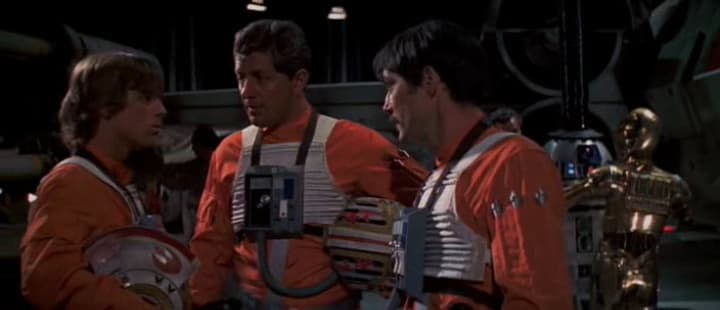
Skywalker! You sure you can handle this ship?
Though it's heavily implied in A New Hope, thanks to Rogue One we now know for a fact that the pilots of Red and Gold Squadrons were hardened combat veterans. Though we still know next to nothing about their individual backstories, watching Garven Dreis (Red Leader) and Jon "Dutch" Vander (Gold Leader) command their fighter groups in the Battle of Scarif only days earlier in continuity, we have more of a connection to them during the Battle of Yavin. We are able to develop more of an appreciation of their skills, and what the casualties suffered during the fight to destroy the Death Star really means.
Though no other familiar rebels are seen at Scarif, it seems likely that Biggs, Wedge, Porkins, and the rest of the Red and Gold pilots were there as well. (Especially seeing as how the film goes so far out of its way to show Red Five buying his farm at the shield gate–thus opening up a slot for Luke to take.)
So amidst all these battle-tested flyers, why put the farm boy in charge of anything on his first ride in a snubfighter? There's no reason why he still couldn't have been the Big Damn Hero who fires the shot that blows up the Death Star, but it doesn't make any kind of sense that Luke should be in charge of the trench run when literally every other pilot in the rebel strike force has more combat experience than he does.
I would argue that it would have been even more dramatic if Luke was written as just another pilot, along for the ride, who was forced through attrition into the position of being the last possible person available to save the day.
What price victory?

The destruction of the Death Star was a tremendous victory for the fledgling Rebel Alliance–but it was also nearly a pyrrhic victory as well. Admiral Raddus led a small armada of cruisers, frigates, & corvettes, and four full squadrons of starfighters to Scarif in Rogue One, an assemblage of rebel ships unrivaled until the Battle of Endor. Nearly the entire flotilla was destroyed by the Empire before it could escape into hyperspace.
The few survivors were themselves all but wiped out at Yavin, leaving only a handful of fighters and the Millennium Falcon as the the extent of the Rebels' offensive capabilities.
It comes as no surprise, given their overwhelming losses, that Princess Leia, General Dodonna, and the rest of the Rebel leadership chose to have a full-scale medal ceremony for the heroes of Yavin. The alternative would've been an hours-long In Memoriam reel and endless sobbing.
Militarily speaking, the Alliance seems to have been utterly devastated: transformed from a legitimate force to be reckoned with back into a ragtag group of insurgents after two engagements less than a week apart. No wonder the Civil War dragged on for another four years after the Death Star was destroyed–the rebels had lost 99 percent of their offensive capabilities.
Having seen Rogue One, we have a much better appreciation of the "dark time for the Rebellion" described in the opening crawl of The Empire Strikes Back. The Alliance is in a rebuilding season, just trying to eke out a frigid existence on Hoth until they are once again able to challenge the might of the Empire effectively.
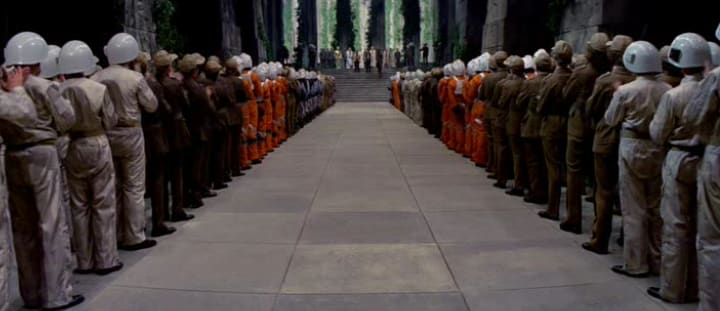
Rebellions are built on hope.
Rogue One is a very welcome addition to the Star Wars live-action catalogue. It introduces a variety of new characters, planets, and ideas that enrich the Star Wars universe. It also provides plenty of ways to reinterpret the classic films of the saga when you watch them back-to-back.

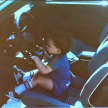
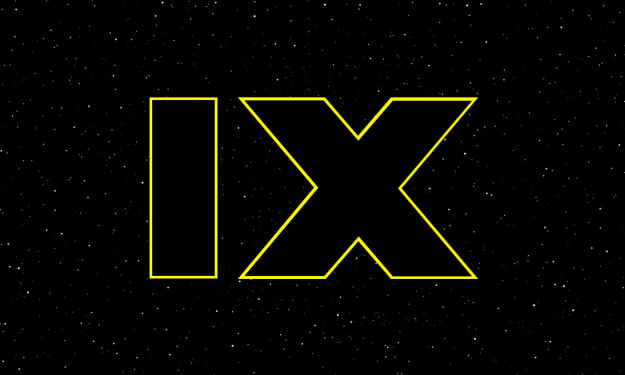



Comments
There are no comments for this story
Be the first to respond and start the conversation.